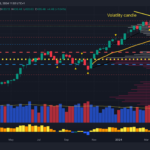
As we’ve been tracking here at PeakProsperity.com, the housing market is starting to look quite ill.
After the central bank-driven Grand Reflation following the Great Financial Crisis, home prices are now beginning to nose over from their new bubble-highs.
Has the Housing Bust 2.0 begun? If so, how bad could things get? And what steps should those looking to pick up values at much lower prices in the future be taking?
This week we talk with citizen journalist Ben Jones, property manager and publisher of TheHousingBubbleBlog– where he tracks the latest headlines and developments in the housing market.
And given the stream of data Ben sees every day, he’s extremely pessimistic on home prices in most major markets worldwide:
We’re going to see a collapse. The housing bubble is in the process of popping right now.
Everybody’s been behaving like speculators. Housing prices have been just like day trading stocks. What’s happening right now is a lot more suggestive of a bubble bursting much more than it does just a correction or a down cycle.
I can’t think of a market in the United States I would buy in right now.
There’s plenty of people like me who have a memory of how this is going to play out (from the 2007 housing bubble burst), and they’re actually probably all lining up the same way.
If you’re looking to purchase housing at better values once this current bubbe bursts, you don’t want to buy from Joe Six-Pack. You want to buy from a bank or a lender, that will frequently be Fannie May and Freddie Mac. For instance, in 2010, I helped somebody buy a house for $12,000 through an online auction. That house had been refinanced four years before for over $100,000. That same day, we could’ve bought three more for the same $10,000-$12,000 price. That’s the kind of discount you want to see and it’s the lenders who are going to be the ones that give you those big discounts. Wait until the distressed sales. You don’t want to be buying retail in real estate.
Sheriff sales, trustee sales — they have to go through this process where they offer the propoerty to anybody who can buy it, including the current owner. They’ll put a print price on it that’s usually what’s owed on the property. When you see them selling it for less than what’s owed, that’s when there’s blood on the streets. Wait until a foreclosure has been sitting on the market for about 6 months, after they’ve whacked it down eight or nine times. Then make a lowball offer.
You have to realize is that the guys that are selling these are hired professional. Their job is to get rid of the houses — they’ve got so much to spend on them and so much that they’re allowed to lose.
That’s where we’re headed again. I would be very patient right now about catching a falling knife in the current market. Wait for the coming distressed discounts.
Click the play button below to listen to Chris’ interview with Ben Jones (43m:05s).
Chris Martenson: I am your host Chris Martenson and today, we’re going to be talking about housing and the many and various housing bubbles that exist across the globe. Housing bubble you say? Yup. Remember, a bubble exists when asset prices rise beyond what incomes can sustain. That’s my definition. I think it’s a good workable one. In housing, my rules of thumb are these. A ratio of median income to median house prices is healthy when it’s in the range of two and a half to three and a half. In other words, if the median household income was $50,000 dollars, then we’d expect immediate house prices ought to be in the range of $125,000 to $175,000.
By the time that ratio stretches to around five, I consider that to be the beginnings of certified bubble territory. By the time that ratio climbs to eight or more, you have a silly bubble on your hands. One that will end in tears for a lot of people, especially those who took out home equity lines of credit or otherwise fell for the stupid banker blather about tapping your equity or taking advantage of the wealth effect. So let‘s give one example. In Toronto, Canada today, the median income for the Metro region is $78,373 dollars. So we’ll call that $78,000. That means a healthy housing market would be priced for the median house somewhere between $195,000 and $275,000 dollars. That makes sense.
Well, let’s turn now to look at the average home selling price in Toronto. What would that be? It’s $825,000, giving us a ridiculous ratio of 10.6. However, if you actually wanted a detached home in Toronto, then the selling price for those vaults to $1.35 million dollars yielding a ratio of 17.3. Bubble territory? You decide. Here today to discuss all things housing bubble related is Ben Jones, proprietor of thehousingbubbleblog.com. Ben’s been tracking housing markets and bubbles for a long time in his excellent blog. Great way to track the ups and the downs of housing. Welcome to the program, Ben.
Ben Jones: Thank you.
Chris Martenson: It’s good to have you. So Ben before we really dive in the housing, could you please tell people about your background and how you got interested in tracking housing bubbles?
Ben Jones: In the 1980s in Texas, I was studying real estate and we had a big real estate bubble that popped, and it was devastating. All the banks failed, the S&Ls. Then 1998 I moved to Austin, Texas and became aware of a housing bubble there. At that time, it was kind of a dot-com thing related. Then that popped, and I moved to Arizona in 2003. Sedona, Arizona and I just kind of parachute in and everybody was just gaga about housing. I had a guy saddle up to me one day and to me, his house was going up 10,000 dollars a month. We’re not talking about fancy houses. So became concerned. In 2004 I started of The Housing Bubble Blog and went from there. Of course, within two or three years in Sedona, it was a disaster. Tell you the truth, it’s really disappointing that we’re back here in this situation that we’re in.
Chris Martenson: Well, I would certainly agree with that, because if we look at the history of bubbles whether they were tulip bulbs, swampland, railroads, it usually took a little over a generation to forget the painful lessons. I’m astonished Ben that we had an internet stock bubble in 2000, a housing bubble in 2007 and we’re here again. I think this shows that whatever people are up to today, maintaining a sense of perspective history and memory is just not part of it. I did not expect us to get back here again so soon.
Ben Jones: Well, that brings up an important point. We talked about it a few times on my blog that, I think this is the same bubble. For instance, in Texas when everything got wiped out in the 80s, the term speculative building was a dirty word for decades. For decades. The fact that we jumped right back into these TV reality shows about flipping houses and stuff like that. I think that shows that this was…that the speculative frenzy wasn’t extinguished by the collapse last decade. So I think it’s the same bubble.
Chris Martenson: Well, now I would agree with that and I think that’s really when we talk about what the central banks were up to, we could constrain it to the Federal Reserve if you want, but I prefer to look at all the world’s central banks because this is a global liquidity phenomenon now. But one of the things they clearly had to do was, they had to maintain that bubble fervor. Because I actually traced this… when people say oh, there was this major housing bubble that burst. That was the pain. I said, no, no. That was a site bubble. The main bubble is this one that’s been blown since the mid-1980s and it’s centered on this ridiculous idea that you can constantly expand debts faster than incomes.
Taken nationally or globally, that would be the global amount of debt to global GDP. Nationally it would be national debt to national GDP. At the household level it’s your household income to your own debt levels. Whatever it is. But as a household Ben we know that’s a dumb idea. I can’t expand my debts faster than my income forever. I have a math problem pretty soon. Somehow, we fell for the story in the central banks. The Federal Reserve is the main defender of this idea that what we need to do as a nation is continually perpetually forever have our debts grow faster than our income. Where do you fall on that particular story? I’m sure you’re tracking the central bank’s shenanigans, too right?
Ben Jones: Right. I think if you chase it down to where it really started, it probably was in the 80s. For instance, from ‘86 to ’89, Fannie Mae and Freddie Mac doubled their mortgage portfolios. So that’s probably where the genesis of the whole thing is and this whole idea that houses or…well, in other words, why housing? Well, because everybody’s got to live somewhere and it’s a way to create this idea, this wealth effect and in as many households as possible. Yeah, now you’ve got houses that were bought for 25…or built rather, for 25, $40,000 dollars now trading for a million or a million whatever. Sure, people feel really wealthy and the dollar has kind of become meaningless and like you said debt becomes meaningless.
When you are talking about incomes to housing prices, there was a report that came out I don’t know, a couple of years ago that the most expensive neighborhoods in the country actually had the lowest incomes to house prices. I think that the high…yeah. That to me was like really telling. I mean, like the one that I remember the most was Mercer Island in Washington was the highest. It has 11…the house prices were 11 to 1 to the incomes. Every single…it wasn’t Detroit. It wasn’t the slums of this area or Ohio. It was the most expensive neighborhoods had the lowest incomes to housing ratios. The report was without any irony. Wow. These people are really wealthy. It’s like, no they’re not. Their houses are just way higher than their incomes.














